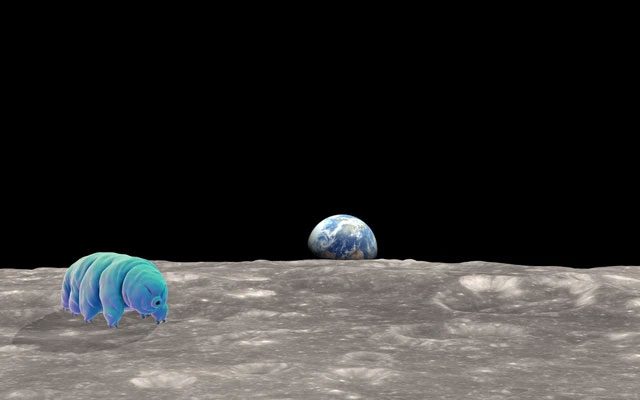Scientists have finally uncovered the secret to the immortality of the tardigrade, the “immortal creature” suspected of hitching a ride on an Israeli spacecraft in 2019.
Tardigrades, also known as water bears, resemble alien creatures from movies and are known for their ability to survive in the most extreme environments, including… the vacuum of space.

Some “immortal creatures” tardigrades are suspected to have invaded the Moon – (Illustrative image from the Internet)
According to Live Science, this immortal creature has been found in a frozen state, in complete darkness, in boiling water from volcanic lakes, and even shot from a gun… yet it still survives robustly.
Some have even been dried out for years in the Atacama Desert of South America and have crawled back to life when exposed to water.
The tardigrade has also become the center of a debate over whether it was the first organism to invade the Moon.
This is because some tardigrades are suspected of having “sneaked in” on the Israeli spacecraft that crashed into this celestial body in 2019, as well as on previous and subsequent missions.
This incredible immortality has been unveiled through a study recently published in the journal PLOS One, conducted by a team from the University of North Carolina and Marshall University (USA).
They discovered that this tiny creature possesses a remarkable ability to combat free radicals.
In most animals, including humans, free radicals—atoms of oxygen with an unpaired electron—are generated in cells under oxidative stress. They react with proteins and segments of DNA, causing harmful mutations leading to diseases and aging.
However, in the immortal tardigrade, free radicals react with a special amino acid called cysteine, which only makes it even more indestructible.
When the experiment inhibited cysteine, the miraculous resilience of the tardigrade was also affected.
In other words, while the majority of the animal kingdom sees their lifespan reduced by free radicals, tardigrades exploit this factor to achieve immortality.
The next step for researchers is to examine how widespread this mechanism is among various tardigrade species.


















































